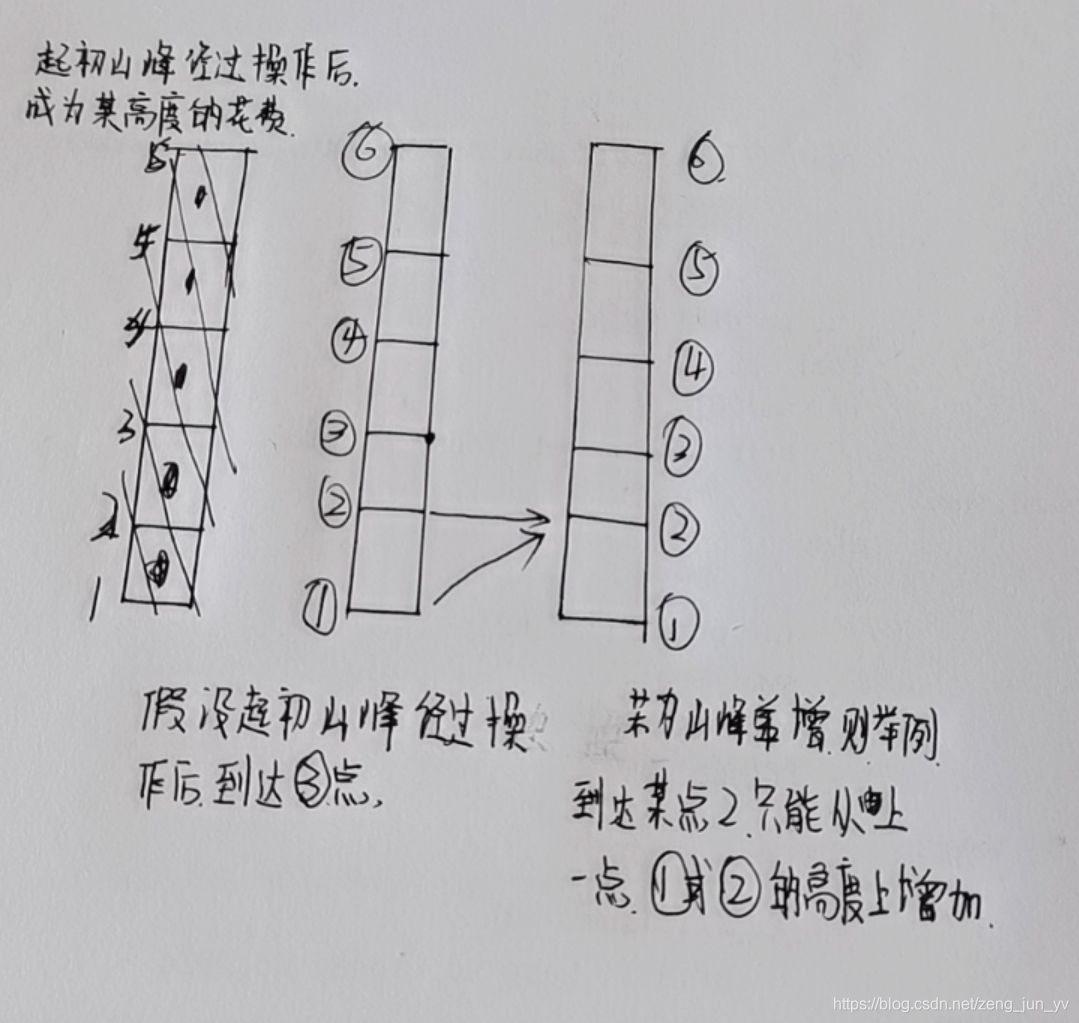题意:
给你n个山的高度,单独的一个数可以任意加减,让经过对每座山峰任意加减高度后变成递增或递减的序列时,求对每个数的相加或相减的数目的最小和。
题目:
A straight dirt road connects two fields on FJ’s farm, but it changes elevation more than FJ would like. His cows do not mind climbing up or down a single slope, but they are not fond of an alternating succession of hills and valleys. FJ would like to add and remove dirt from the road so that it becomes one monotonic slope (either sloping up or down).
You are given N integers A1, … , AN (1 ≤ N ≤ 2,000) describing the elevation (0 ≤ Ai ≤ 1,000,000,000) at each of N equally-spaced positions along the road, starting at the first field and ending at the other. FJ would like to adjust these elevations to a new sequence B1, . … , BN that is either nonincreasing or nondecreasing. Since it costs the same amount of money to add or remove dirt at any position along the road, the total cost of modifying the road is
|A1 - B1| + |A2 - B2| + … + |AN - BN |
Please compute the minimum cost of grading his road so it becomes a continuous slope. FJ happily informs you that signed 32-bit integers can certainly be used to compute the answer.
Input
- Line 1: A single integer: N
- Lines 2…N+1: Line i+1 contains a single integer elevation: Ai
Output
- Line 1: A single integer that is the minimum cost for FJ to grade his dirt road so it becomes nonincreasing or nondecreasing in elevation.
Sample Input
7
1
3
2
4
5
3
9
Sample Output
3
分析:
前言:这道题纠结了好久,原因是我没想到离散化,知道用离散化后,我还是转不过来,认为经过增加或减少后,山峰的高度不为原始高度的任意一种,所以认为离散化不是最优的,其实到现在我还是这么认为,但由于山峰高度过高,哪怕离散化过后枚举复杂度还是有o(n2n^{2}n2),所以我妥协了(在这里求助,如果有大犇有关于这道题离散化更好地理解,希望能给我一些帮助,嘻嘻)
1.这道题dp还是好理解的,即离散化过后每次枚举当第i个山峰到达某山峰高度,dp[i][j]表示把前i个数变成单调增且第i个数变成原来第j大的数的最小代价。
2、把给定的山峰高度排好序,就成为其离散的递增或递减的高度。
3、对第一点进行与排好序的最小值的点进行比较,求得dp[0][j]要升到第j的高度时所要的花费
4、对第二点及以后的每一点进行更新。dp[i][j]第i+1点到高度j时的前i+1个总的花费

5、找到更后最后一个点到任意高度的最小值便为答案
AC代码:
#include<string.h>
#include<stdio.h>
#include<iostream>
#include<algorithm>
using namespace std;
const int M=2e3+10;
int n,k;
int a[M],b[M],c[M];
int dp[M][M],e[M][M];///用数组下标进行离散化,表示某位置最小的花费
bool cmp(int x,int y)
{return x>y;
}
int main()
{cin>>n;for (int i=0; i<n; i++)cin>>a[i],b[i]=c[i]=a[i];sort(b,b+n);for (int i=0; i<n; i++)dp[0][i]=abs(b[i]-a[0]);for(int i=1; i<n; i++)//枚举第几座山峰{k=dp[i-1][0];for (int j=0; j<n; j++)///枚举山峰到达离散化后某高度{k=min(k,dp[i-1][j]);dp[i][j]=k+abs(b[j]-a[i]);}}sort(c,c+n,cmp);for (int i=0; i<n; i++)e[0][i]=abs(c[i]-a[0]);for(int i=1; i<n; i++){k=e[i-1][0];for (int j=0; j<n; j++){k=min(k,e[i-1][j]);e[i][j]=k+abs(c[j]-a[i]);}}int ans=dp[n-1][0];for (int i=0; i<n; i++)ans=min(ans,min(dp[n-1][i],e[n-1][i]));cout<<ans<<endl;return 0;
}


)


(重现赛)B题 Broken Pad 暴力+思维)

)

)

![[推荐]大量 Blazor 学习资源(二)](http://pic.xiahunao.cn/[推荐]大量 Blazor 学习资源(二))

getline输入)

用法)
)

)